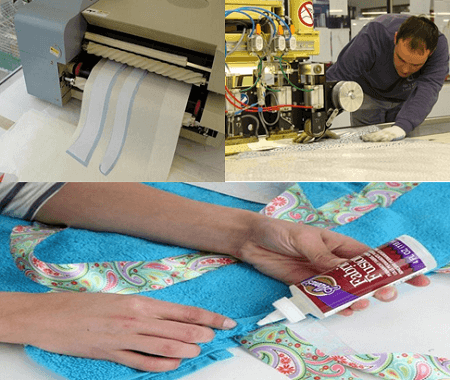Alternative Methods of Fabric Joining Applied in Apparel Industry
Alternative Methods of Joining Fabric:
To join the fabric, the sewing process is done by using a needle and sewing thread. It is the oldest and widely used method in the readymade garments industry. But there are some fabric joining process comes by researching with a long time though those have some limitations such as seam appearance, joining speed, seam performance, etc. In case of some special cases, those alternative methods have to apply for fabric joining instead of the normal sewing method. Those methods have discussed in this article.
Alternative Methods of Fabric Joining Applied in Garment Industry:
Four methods are normally applied for fabric joining instead of normal sewing methods. Those are-
- Fusing,
- Welding,
- Adhesive,
- Molding.
All the above processes or methods have explained the below:
1. Fusing:
It is the most used method among the four alternative fabric joining methods. Normally it is used to attach interlining. Here, firstly the part of apparel that is to be fused spread, and then the resonated interlining surface is placed on it. Finally required pressure and temperature applied here smoothly. Resin on the coating of interlining is melted by heat into the fabric under pressure. When it becomes cool and hard both the fabric and interlining are attached.

2. Welding:
In this method, fabrics are joined in a limited quantity. By using these types of methods, two or more fabric plies which have made of at least 65% thermoplastic fibers can be attached by providing heat and pressure along the seam line.

Here, heat is generated by the ultrasonic process. By generating heat, the thermoplastic fibers in the fabrics are melted and the melted polymers are joined by applying required pressure. In this method, the transducer is used to transfer electricity into vibration which is about 20000 Hz per second.
3. Adhesive:
Adhesive means a substance that causes fibers, yarns, fabrics, or other materials to adhere or stick together. There are two types of adhesive available for joining the fabrics. Those are-
- By using a silicon paper, containing a thin layer of adhesive in which fabrics are joined after placing.
- By using a solid adhesive, this will be melted under heat. As result fabrics are joined together.

Adhesive threads can be used as looper thread for neatening the edge of fabrics. Normally adhesive thread is melted by applying heat and pressure by folding the neatened edge and joined with the fabrics during the making of the hem.
4. Molding:
By using this method, one or more plies of fabrics cannot be joined though it is placed as an alternative method of fabric join. Molding helps to give a specific shape to the garments without creating any seam. The shape is given to the fabrics by stretching or shrinking and the entered thermoplastic fibers are softening by applying heat. After that temperature is decreased to be normal. As a result, the new shape or area of fabrics are made. It is done in the case of knitted fabrics because it is easy to stretch or shrink the fabrics.
-Written by
Mayedul Islam
Merchandiser at Fashion Xpress Buying House.
Badda, Dhaka, Bangladesh.
Email: mayedul.islam66@gmail.com

Mayedul Islam is a Founder and Editor of Garments Merchandising. He is an Expert in Garments Merchandising. Writing is his passion. He loves to write articles about Apparel, Textile and Garment Washing specially on Merchandising. Mail him at mayedul.islam66@gmail.com

